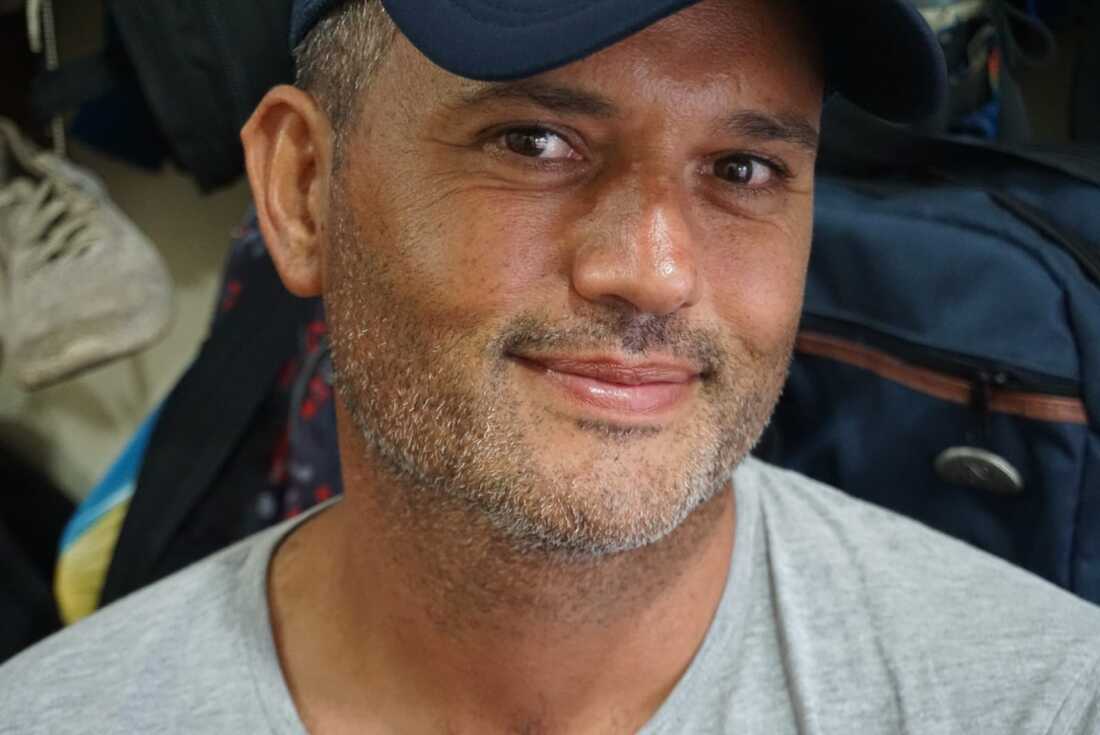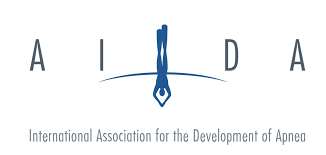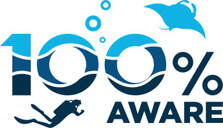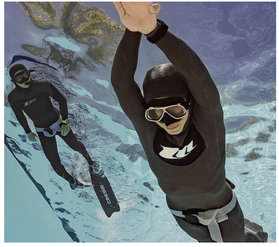 Si eres un ávido freediver, probablemente pasas mucho tiempo pensando en el freediving, hablando de freediving y compartiendo detalles de tus últimas aventuras de freediving. Convertirte en PADI Freediver Instructor lleva tu pasión por el freediving al siguiente nivel y te permite hacer de lo que disfrutas una profesión. Debes ganar el nivel de PADI Freediver Instructor, pero consigues un trabajo que te permite compartir increíbles aventuras bajo el agua con otros - transformando sus vidas para mejorarlas y enriquecer la tuya. Hay dos caminos para obtener el nivel de PADI Freediver Instructor. El primero es para freedivers experimentados que ganan destrezas formativas asistiendo a un Curso PADI Freediver Instructor Training. El segundo camino es para los freediver instructors que quieren unirse a la organización PADI asistiendo a una Orientación PADI Freediver Instructor. Para inscribirte en un Curso PADI Freediver Instructor Training, debes tener al menos 18 años de edad, poseer la certificación PADI Master Freediver (o certificación equivalente), ser Emergency First Response Instructor actualizado (o acreditación de instructor de RCP/primeros auxilios) y presentar una declaración médica firmada por un médico dentro de los 12 meses. Toma nota de que los PADI Open Water Scuba Instructors (o nivel superior) que también son freedivers experimentados pueden solicitar directamente el nivel enviando una Solicitud de PADI Freediver Instructor a sus Oficinas Regionales PADI. Académico
En el Curso PADI Freediver Instructor Training, durante un mínimo de cuatro días, tanto en sesiones en el aula como en el agua, cubrirás estos temas:
Si desea mas información escríbenos : [email protected] +593 98 388 3874 www.ApneaGalapagos.com Escape |Explore |Experience . . #apneagalapagos #freedivinggalapagos #freediving #freediver #galapagos #galapagosisland #puertoayora #santacruzisland #padi #paditravel @paditravel #projectaware #underwaterphotography #diveshopgalapagos #freediveshop #sharkdiving #Travel #lasgrietas #buceo #scubadivinggalapagos #apnea #cursosdeapnea #freedivingcourses
0 Comments
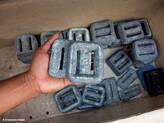 Cuando Hacemos Apnea de profundidad, debemos llevar menos lastre. Para así mantenernos más neutros en la mitad de la profundidad y sobre todo que el ascenso sea cómodo y seguro. Es mejor forzar algo más bajando que no empezar a subir y ver que no somos capaces o nos cuesta mucho. En apnea siempre se usará un cinturón elástico. Eso ayuda a ajustar el cinto mejor al cuerpo, y que no se nos mueva y pueda caer al estar en vertical, ya sea hacia los pies, o hacia el pecho. Puede ser tipo marsellés o con hebilla ajustable. Pero siempre con una goma elástica. Además es muy importante la posición en la que se lleva. Es habitual en gente que empieza poner el cinturón en la cintura, ajustado. Eso nos complicará mucho ventilar, y limitará poder realizar una respiración abdominal adecuada. El cinturón entonces debe ir en la cadera, ajustado para que no se mueva. Mejoraremos la apnea considerablemente Sobre todo cuando se empieza, es preferible ir poco lastrados por temas de seguridad. Es mucho más cómodo y seguro ascender rápido por defecto de plomo, que no pasarse en una picada y nos cueste mucho ascender. Sobre todo cuando no se tiene experiencia, que el factor de agobio aún complica más el ascenso. A medida que se tiene más experiencia, se ajusta mejor el lastre. El 5% de peso corporal en lastre es un buen punto de partida. la seguridad es nuestra prioridad. www.ApneaGalapagos.com Escape |Explore |Experience . . : . . #apneagalapagos #freedivinggalapagos #freediving #freediver #galapagos #galapagosisland #puertoayora #santacruzisland #padi #paditravel @paditravel #projectaware #underwaterphotography #diveshopgalapagos #freediveshop #sharkdiving #Travel #lasgrietas #buceo #apnea Este elemento es una parte imprescindible en el equipamiento de cualquier apneista
¿Qué necesitas?
1- Corta un trozo de neumático
Deja que sobresalgan un par de centímetros. 3 Llena de plomo el neumático
Ventajas de usar el neckweight en apnea dinámica:
Acabas de ver cómo fabricar un neckweight en poco más de media hora. Espero que te construyas uno y lo pruebes. Si tienes alguna duda o algo que aportar, no lo dudes ¡Deja un comentario! [email protected] +593983883874 www.ApneaGalapagos.com Escape |Explore |Experience . . : . . #apneagalapagos #freedivinggalapagos #freediving #freediver #galapagos #galapagosisland #puertoayora #santacruzisland #padi #paditravel @paditravel #projectaware #underwaterphotography #diveshopgalapagos #freediveshop #sharkdiving #Travel #lasgrietas #buceo #scubadivinggalapagos Flying into Ecuador and then directly to the Galapagos islands
• To enter Ecuador you need to have a Negative SARS-COV 2/COVID-19 PCR test – real time: Nasopharyngeal (not the rapid test). You must enter within 10 days of the test being taken. GALAPAGOS STILL REQUIRES A NEGATIVE TEST WITHIN 96 HOURS, so if you do not accomplish this you will need to take another test in the mainland Ecuador. • On arrival to Ecuador passengers will be required to sign a Declaration of good health document – stating where they wil stay in Ecuador and Galapagos. • On arrival to Ecuador IF YOU PRESENT WITH SYMPTOMS OF COVID-19 passengers must take a 2nd SARS-COV 2/COVID-19 PCR test – real time: Nasopharyngeal (at cost to the passenger). The passengers must stay in the Ecuador continent for 48 hours whilst waiting for the results IN A HOTEL ON THE PRESCRIBED LIST FROM THE AUTHORITIES. • If the result is Negative the passengers can continue on their journey. If the result is positive the passengers will have to complete the cumpulsory quarentine. • You must have a tour package, cruise, hotel or tour booked in Galapagos. The ministry of Tourism wants all tourists registered with their itineraries. If you don’t want to book a whole package you can still enter Galapagos, but you need to have something booked, hotel or tour, so you are registered with an authorised agency or hotel. • You will need to get the “Salvo-conducto” (safe passage) document from your travel agency, hotel, who ever you booked with. They will need to process this with the Ministry of tourism and provide you with a copy. You will need to show this along with your Negative PCR test at the airport to enter Galapagos. • You must wear a face mask at all times in Ecaudor and the Galapagos islands and during your flights. They are readily available for purchase now pretty much everywhere you go, so if you run out, lose, break your masks you will be able to buy replacements. • The flight protocol to Galapagos will be the same as your international flights. Your • temperature will be checked before entering the aiport in Ecuador mainland and on arrival to Galapagos. If your temperature is above 37.9C you will ne be permitted to board the plane or enter Galapagos. • All foregin passengers are required to have Health/Travel insurance. 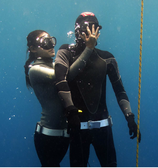 Apagones en aguas poco profundas: ¿que son y como prevenirlos? El síncope se define como una pérdida súbita y temporal de la conciencia y del tono postural, debido a una disminución repentina del flujo sanguíneo cerebral. también llamados apagones de buceadores libres o apagones hipóxicos, son algo que puede afectar potencialmente a cualquier persona que participe en deportes acuáticos. A continuación, se ofrece información sobre lo que implican los apagones en aguas poco profundas y cómo prevenirlos. ¿Qué son los apagones de aguas poco profundas? Un apagón en aguas poco profundas es la pérdida del conocimiento o "desmayo" bajo el agua, causado por la falta de oxígeno en el cerebro mientras se retiene la respiración. A pesar de su nombre, un apagón de este tipo puede ocurrir a cualquier profundidad, aunque la mayoría de los casos ocurren en aguas a menos de 30 pies (9 m). ¿CÓMO OCURREN? Su cuerpo registra tanto la cantidad de oxígeno como de dióxido de carbono (CO2) en su sangre. Cuando el CO2 en su sangre alcanza un cierto nivel, se alcanza lo que se llama el "punto de ruptura". En el punto de ruptura, los buzos que sostienen la respiración salen a la superficie y respiran. Si alcanza el punto de ruptura mientras aún está bajo el agua, experimenta una necesidad incontrolable de respirar, lo que hace que inhale agua. La hiperventilación antes de bucear en apnea disminuye la cantidad de CO2 en la sangre, lo que significa que mientras está bajo presión, un buceador libre puede tener suficiente oxígeno para mantener la función cerebral normal sin necesidad de respirar, debido a los niveles más bajos de CO2. Cuando los niveles de CO2 alcanzan el punto de ruptura y el buceador asciende, la caída de la presión ambiental puede provocar una disminución de la presión parcial de oxígeno. El resultado es que el cerebro no recibe suficiente oxígeno y el buceador puede perder el conocimiento. ¿QUIÉN ESTÁ EN MAYOR RIESGO? Los buceadores libres son algunos de los participantes de deportes acuáticos de mayor riesgo. En términos generales, cualquier persona que participe en buceo con apnea o natación está en riesgo. Los buceadores, los que practican esnórquel, los nadadores competitivos y los pescadores con arpón corren un mayor riesgo de sufrir apagones en aguas poco profundas debido a los largos tiempos de retención de la respiración y al posible esfuerzo bajo el agua. Si bien cualquier persona puede sufrir apagones en aguas poco profundas, los hombres más jóvenes y competitivos también corren un mayor riesgo. ¿CÓMO PUEDE PREVENIRLOS? El primer factor y el más importante es la educación. La causa de muerte de muchas víctimas de apagones en aguas poco profundas es el ahogamiento. Esto significa que no hay suficiente conocimiento sobre la condición. Incluso los nadadores competitivos que han participado en este deporte durante décadas a menudo desconocen la posibilidad de sufrir apagones, aunque saben que la hiperventilación y la contención prolongada de la respiración pueden ser peligrosas. Evite la hiperventilación y el ejercicio antes o durante el buceo con apnea para ayudar a prevenir apagones en aguas poco profundas. 1-No tenga sobrepeso mientras bucea con la respiración. Intente la flotabilidad neutra a una profundidad de 5m 2-Asegúrese de que su cinturón de lastre se suelte rápidamente y trátelo, y cualquier otro equipo, como desechable. Déjalo ir si es necesario. 3-Entrene y bucee siempre con un compañero que esté al tanto de los apagones en aguas poco profundas, sus señales y cómo tratarlos. 4-Use un tiempo de recuperación 2: 1 con profundidades menores a 60 pies (18 m) y un tiempo 3: 1 con profundidad mayor a 60 pies o mayor a 90 segundos. Por ejemplo, si se sumerge a 60 pies o menos, recupérese en la superficie durante dos minutos después de una inmersión con la respiración de 1 minuto. Cualquiera que practique deportes acuáticos corre el riesgo de sufrir apagones en aguas poco profundas. Son en gran medida indiscriminados en cuanto a edad, género e incluso niveles de condición física. La forma más importante de prevenirlo es a través de la educación, seguida de evitar la hiperventilación y las inmersiones prolongadas o repetitivas con la respiración en apnea. Preguntas y Cursos : [email protected] www.ApneaGalapagos.com Escape |Explore |Experience . . : . . #apneagalapagos #freedivinggalapagos #freediving #freediver #galapagos #galapagosisland #puertoayora #santacruzisland #padi #paditravel @paditravel #projectaware #underwaterphotography #diveshopgalapagos #freediveshop #sharkdiving #Travel #lasgrietas #buceo #scubadivinggalapagos #sincope #blackout 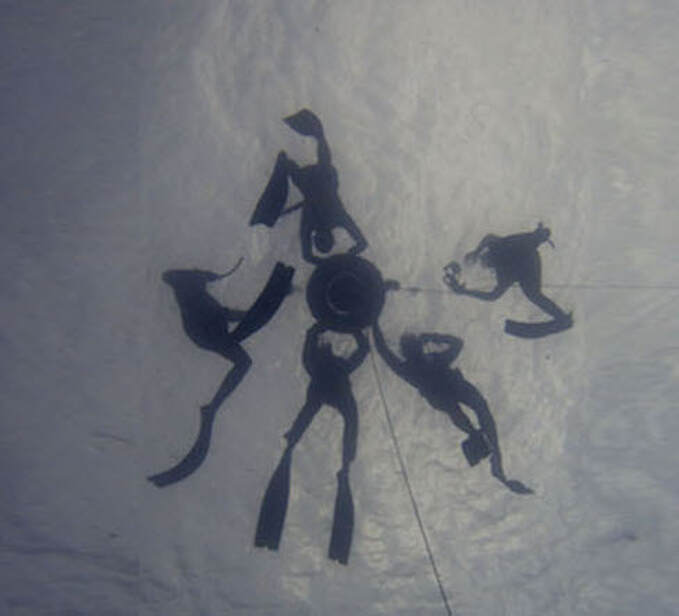 1- Aprenderás a bucear más seguro A lo largo de mi vida hice varios cursillos de primeros auxilios. Pero antes de mi primer curso de apnea nunca había pensado en cual es la mejor forma de rescatar a un compañero que se desmaya en el mar. Pensaba que la forma correcta de reanimar a un apneísta que sufre un síncope era ponerse inmediatamente con la RCP Tenía una idea vaga de lo que es un síncope y por qué se produce. Estos temas se explican en cualquier curso de apnea y te permiten entrenar y practicar con mayor seguridad, tanto para ti como para tus compañeros. 2- Aprenderás a moverte de manera eficiente ¿Te colocas en su sitio el cinturón de plomos? ¿Sabes respirar correctamente? ¿Estás seguro de que no hiperventilas? ¿Tu posición durante el descenso es hidrodinámica y relajada, o tienes la espalda y cuello arqueados? ¿Cómo aleteas? ¿Tu golpe de riñón es ágil como el de un cormorán o lento como lo era el mío hasta que me enseñaron a mejorarlo? Hay mil vicios que has ido adquiriendo con el tiempo. En un curso te ayudarán a corregirlos y serás más eficiente en el agua. 3- Mejorarás y ampliarás tu técnica Además de corregir lo que ya sabes y no haces bien, aprenderás otras muchas cosas que te serán útiles en tus inmersiones. Hace unos meses leí un comentario de un gran pescasub que decía no poder pescar a más de XX metros porque ‘la gafa se le chafa contra la cara y le resulta imposible compensar’. Aprendiendo otras maniobras de compensación no tendría ese problema. Y esto se explica en cualquier curso de apnea. A mí me ayudó a entender cosas que había encontrado por mi cuenta, como las tablas para entrenar apnea estática. No comprendía la diferencia entre las de tiempo de recuperación decreciente y las de tiempo de apnea creciente. Ahora ya se para que sirve cada una. 4- Redescubrirás tus límites Tras sentirme en un entorno seguro y haber aprendido a moverme mejor bajo el agua, me relajé y me dejé llevar. Alcancé profundidades buceando en peso constante que no creía posibles para alguien «normal». Estar vigilado por instructores con experiencia te dará seguridad. Llegarás cómodo a nuevas cotas, aumentarás tus tiempos de estática y tus distancias en dinámica. 5- Conocerás gente para salir a bucear, pescar o entrenar Haciendo un curso de apnea coincidirás con otras personas que disfrutan del mar como tú. Te encontrarás con pescasubs, fotógrafos y otros que disfrutan de la apnea por la apnea. Seguro que acabas compartiendo salidas de vez en cuando con alguno de ellos. Además, tendrás la garantía de que tus compañeros tendrán los conocimientos apropiados para ayudarte en caso de una emergencia. 6- Es una oportunidad para relacionarte con grandes apneístas Hoy en día, la mayor parte de los instructores, son gente que ha pasado por el mundo de la competición y conocen bien el deporte. Poder pedirles consejo sobre entrenamiento, charlar de alimentación con ellos o escucharles contar batallitas de tal o cual campeonato es un lujo que estará a tu alcance. Cursos y talleres : [email protected] Escape |Explore |Experience . . : . . #apneagalapagos #freedivinggalapagos #freediving #freediver #galapagos #galapagosisland #puertoayora #santacruzisland #padi #paditravel @paditravel #projectaware #underwaterphotography #diveshopgalapagos #freediveshop #sharkdiving #Travel #lasgrietas #buceo #scubadivinggalapagos 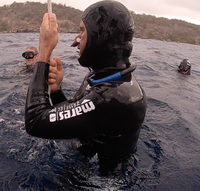 El reflejo de inmersión es un conjunto singular de adaptaciones evolutivas que permanecen desde el tiempo en que la vida se desarrollaba en los océanos. El reflejo de inmersión, al igual que el reflejo de natación, son componentes propios de la naturaleza humana y pueden ser observados en recién nacidos y bebés en ambiente acuáticos. A pesar de que la mayor parte de las especies de mamíferos han perdido muchos de los lazos que nos conectan con los océanos (por ejemplo, los pulmones no funcionan especialmente bien bajo el agua), aún estamos relacionados con nuestros antepasados que moraban en el océano. Y el reflejo de inmersión es un remanente de algunas de las características que permitieron a esos familiares del pasado sobrevivir en el ambiente acuático. El reflejo de inmersión es activado cuando la cara de un mamífero entra en contacto o es sumergida en agua fría. Cuando esto sucede, unos receptores situados dentro de la nariz y los senos, así como en partes de la cara conectadas al nervio trigémino, se activan. La información de que la cara ha encontrado agua se transmite al cerebro y al sistema nervioso autónomo a través del nervio vago. Esto provoca el cierre inmediato de las vías aéreas y varios cambios fisiológicos destinados a optimizar la conservación de oxígeno del cuerpo. Los cambios que empiezan tras la activación del reflejo de inmersión incluyen: Bradicardia Reducción del ritmo cardíaco de aproximadamente el 10 al 25% que ocurre inmediatamente tras el contacto de la cara con el agua (incluso sólo salpicando la cara con agua se conseguirá este efecto). La reducción del ritmo cardíaco reduce la entrada de oxígeno en el torrente sanguíneo, permitiendo al cuerpo conservar O2 y a los órganos vitales utilizarlo más eficientemente. Para los apneístas, el resultado de la bradicardia es la ampliación del tiempo bajo el agua. El reflejo de inmersión causa vasoconstricción periférica Esto es un estrechamiento de los vasos sanguíneos (mediante la contracción de los músculos de sus paredes) para reducir el flujo de sangre. Tiene lugar al incrementarse la presión debido a la inmersión en el agua. Los capilares de las extremidades (dedos de las manos, dedos de los pies, manos, pies, brazos y después las piernas) empiezan a estrecharse, lo que restringe el flujo de sangre a esas áreas y lo dirige hacia los órganos vitales, que incluyen el corazón, pulmones y cerebro. Todos ellos son alimentados con cantidades de oxígeno significativamente superiores a otros órganos periféricos. Blood shift Tras sumergirnos, la presión se incrementa con la profundidad. De acuerdo a la ley de Boyle, los pulmones y el aire contenido en su interior se comprimirán a medida que el apneísta desciende. Debido a la vasoconstricción periférica iniciada por el reflejo de inmersión, la sangre será empujada de las extremidades a los órganos vitales y a la cavidad torácica (pecho), resultando en un porcentaje más alto del volumen sanguíneo en esta área, que ocupará el espacio creado por la compresión del aire dentro de los pulmones. La sangre, que es similar en muchos aspectos al agua del océano, no podrá ser comprimida debido a su naturaleza líquida y mantendrá su volumen independientemente de la profundidad que el buceador alcance. Como la sangre rellena el espacio vacío provocado por la compresión del aire en profundidad, los pulmones no sufrirán un colapso debido al incremento de la presión experimentado. El blood shift también ocurre en otros órganos del cuerpo de una forma similar y con el mismo resultado. Contracción del bazo Como parte del reflejo de inmersión, el bazo experimentará contracciones cuando un buceador está sujeto a la presión de la profundidad. Típicamente, el bazo actúa como una reserva de grandes cantidades de sangre que circulan a través de él. Conjuntamente con los volúmenes de sangre requeridos por el blood shift tratado arriba, el bazo se contraerá y liberará sangre en el sistema circulatorio. El volumen adicional de sangre que entra en el cuerpo como resultado de la contracción del bazo no sólo incrementará la cantidad de oxígeno disponible para el sistema, sino que también ayudará a aumentar la capacidad de transporte de la sangre entre los pulmones y otros órganos. El reflejo de inmersión es una adaptación evolutiva que nos permite bucear bajo el agua por períodos extendidos de tiempo. Como respuesta a la inmersión facial e inmersión en el agua, el reflejo de inmersión será activado, resultado en una reducción del ritmo cardíaco (bradicardia) que es amplificado por encontrarnos en apnea y por el incremento de la presión, el desvío de la sangre de las extremidades a la cavidad torácica (vasoconstricción periférica), el movimiento de la sangre a los pulmones y otros órganos vitales para prevenir un colapso en profundidad (blood shift), y la contracción del bazo que ayuda al blood shift cuando enfrentamos grandes profundidades y presiones. Como apneístas, el reflejo de inmersión es esencial para poder permanecer bajo el agua durante períodos de tiempo extendidos y puede ser reforzado a través de la experiencia y la práctica para mejorar el rendimiento en el buceo. Cursos de Apnea y Coaching personalizado : [email protected] www.ApneaGalapagos.com 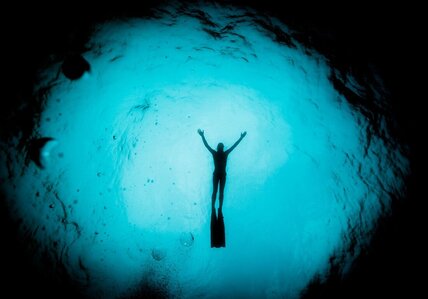 The mammalian dive reflex makes freediving possible, and even looks after us during the process. While the reflex is autonomous, i.e. we can’t control it, we can train it, if we are stressed, we will inhibit it. What makes it possible for one person to dive to 90m and for another to black-out at 20m? The main differentiator is stress, or management of stress. The breath and the mind are interlinked. When we are stressed we are told to stop and take a few deep breaths. This is because when we slow down the breath, we slow down the mind, which hopefully gives us space to see things more clearly and take control. Our mind is a tool, part of our body just like any other, and just like any other part of our body, it needs exercise and challenge to work properly. Where the mind becomes more important than our body is, that when our mind is not trained and controlled, it begins to control us. This is where all the modern stress-related illnesses are coming from – a lack of control of our mind, letting it take control of us. Meditation and yoga and an integral part of freediving training, but the importance of meditation cannot be underestimated. If we feel stressed about a dive, attempting a new depth, for example, our breathing becomes rapid and shallow and the whole dive reflex is switched off. Which is why a theoretically ‘easy’ dive of 20m becomes a huge challenge. Meditation trains the mind to see things as they are, not overly positive and not overly negative. A dive is a dive. And if you’re diving happily to 48m, there is no reason why you shouldn’t dive to 50m. But often we attach so much importance to that big number that it becomes scary, we feel stressed about our dive, and our dive reflex switches off. And the thing we are scared about – blacking-out – is far more likely to happen as our body is not ready to dive. It becomes a vicious circle. Meditation breaks this circle. Understanding the physiological response to diving gives us a rational base to start from. Then when we just see the dive for what it is – a physical and mental challenge for which we are well-prepared, and of which we are more than capable of achieving, then the dive happens more or less on its own. Meditation builds trust in ourselves and our bodies, and allows the essential moment of surrender to the process, trusting that the body knows what to do to take perfect care of us. Contrary to what many people believe, it is not about drifting off and not thinking about anything, it is about supreme focus and attention, thinking only about the stage of the dive you are currently in – not worrying about an imperfect duck-dive, stressing about the free-fall or doubting your ability to make it back from the bottom. Equally not feeling overly euphoric on the ascent because you hit a new target depth. Whatever stage of the dive you are in, you are in 100 percent, not distracted or mislead by thoughts of any other part of the dive. Once this can be achieved, the freedive looks after itself.  Your answer to that question will likely depend on your age. If you’re a young buck, you’ll probably feel like you fit six months into the last three. If you’re longer in the tooth, chances are your summer seems to have gone by in a quick blur – much like the rest of your year. Time is a fixed dimension. “Clock time” can be broken into minutes, seconds, and nanoseconds, and can be objectively measured. Even without an external chronometer to aid us, our internal clocks often do an excellent job of tracking time; if I asked you to guess the time right now, you’d probably be pretty close. Yet how we perceive time is not always so accurate. Depending on our circumstances, time may seem to contract or expand, speed up or slow down. Time will not only seem to expand during life-threatening situations, but also whenever we encounter something novel or do something new.But Doesn’t Time Fly When You’re Having Fun? There are two types of time perception: prospective and retrospective. Prospective time occurs when you’re in the moment, and your brain is anticipating what will happen next. When you’re busy and a lot is happening, “your mind is no longer attending to time at that moment — you’re not checking your watch or clock — so it seems like time is going by fast.” If you’ve ever been a waiter on a busy night, you know your shift can fly by — your mind is super focused on serving customers and what your next task is rather than on the clock.The flip side of prospective time occurs in situations that lack stimuli to engage your brain. If you’re in a boring meeting, or on a long flight, “your mind is deeply attuned to time because you’re always checking your watch every 10 minutes or so.” You have little else to do besides watch the minutes tick by, which makes time seem to slow way down. Once your mind reflects on what you’ve been doing (which happens pretty immediately), you transition into retrospective time. If you’ve been doing something boring and bereft of stimuli, your brain won’t have recorded much “footage” from the experience, and it will seem like a quick episode – a waft of cerebral nothingness – in your memory. If you look back on that boring meeting or long flight, it barely registers as a happening in your brain. How to Become a Time Wizard and Slow or Quicken Your Perception of Time When you’re young, everything is new – you’re constantly figuring out how the world works and learning the rules that govern nature and society. And you’re regularly engaging in “firsts”: first day of school, first time driving, first real job, and so on. With all this novelty, your brain is regularly laying down the kind of rich, dense memories that stretch out your perception of time. In contrast, when you’re an adult, you’ve pretty much been there and done that. You’ve discovered the patterns of life, and your day-to-day doings are likely much more routine and predictable. Your brain doesn’t have any reason to expend energy on capturing your repetitious and predictable morning commute, ceremonial eating of a ham sandwich at your desk at work, and nightly watching of Game of Thrones. “Nothing to see here,” your brain says, and its camera clicks off. Thus, when you look back on each week, month, and year, there’s very little footage to read out, and your life seems to have passed in a fleeting blur. Those who live a mundane, repetitious life are actually hit with a double whammy: in the midst of their boring day-to-day lives (prospective time), time seems to drag interminably on. Yet when they reflect on their lives (retrospective time), it seems to have sped by! Yet such a fate is not inevitable. The very cool thing about this research is that it shows us how easily time can be manipulated – how “rubbery” it is, as Eagleman puts it. You have it in your power to slow down (or speed up) your perception of time. You can’t literally make your life longer, but you can make it seem longer. All you need to do is regularly inject a little novelty into it. Think about the last time you went on a great, action-packed vacation. Dimes to donuts, at the end of the trip, you said something like, “We were only here a week, but I feel like we’ve been gone forever.” All that new adventure slowed down your perception of time. Even as we get older, we can still seek out new horizons and new “firsts.” You don’t have to do big things like traveling in order to stretch out time either. try things like:
When you reach the end of your days, and look back over the course of your life, you can either feel like you were just 18 yesterday and that the subsequent decades passed in the blink of an eye; or, you can run the tape on a seemingly never-ending stream of rich footage of your many adventures, your interesting everyday life, and the wealth of knowledge you accumulated. If the latter, instead of seeing your life flash before your eyes, you will enjoy the satisfaction of watching it languidly unfold and relish the sense of having fit several lifetimes into a single one.  Oh, carbon dioxide. Such an important gas for freedivers, yet so uncomfortable and annoying…for most of us at least. But as annoying as CO2 is, it is really useful to get used to that unpleasant feeling, embrace it even, and build up a tolerance to it. For beginners especially, static CO2 training can greatly improve breath-hold time in a fairly short timespan. Beginners that are training dynamic CO2 tables should take it a bit easy and stay focused on proper technique until it is deeply ingrained since being stressed underwater can lead you to become sloppy and possibly create bad habits. So what should you keep in mind before starting any of these tables? First of all, when training, always have a trained buddy, and no…your local pool’s lifeguard does not count. These tables can be adjusted to your abilities, so if a table seems too easy or too hard, make it a longer or shorter distance or breath-hold time. Make sure not to over-train; freediving should still be fun, so it is better to begin slowly and increase over time. In the beginning, training CO2 tables three times a week with a rest day in-between is advised. ALL TRAINING SHOULD BE DONE WITH A TRAINED BUDDY Static The classic static CO2 table can take a lot of time, often over 20 minutes for most people, and while it is a helpful table, not everyone wants to wake up extra early before work to complete this table on an empty stomach. One-breath tableAn alternative is the “one-breath” table, where you hold your breath for 1:00. At the end of the breath hold, you take one full exhale, and one full inhale and hold again for 1:00. Repeat 8 to 10 times, or until it becomes too difficult. This table takes much less time than the classic CO2 table, as contractions kick in earlier and breathe-up time is minimized. DynamicTraining dynamic CO2 tables are extremely useful, not just for CO2 tolerance, but for lactic acid tolerance as well. If you are performing a CO2 table, only do one per training day, whereas the other exercises can be performed multiple times, but should be stopped if you feel a headache from the CO2 or too much lactic acid buildup. 16x25m (82ft) table Begin in a pool, completely relaxed, with your normal breathe-up. The objective is to dive 25m in one breath, surface at the edge of the pool, and recover. You choose the amount of time you have to recover and breathe-up, but as you repeat this 15 more times, try to keep the total time for the table as short as possible. An advantage of this table is that it is up to you how challenging it is, whether you take a longer or shorter recovery time. After a few practices, you can set new time limits for yourself to train against. 25m (82ft) fast 25m slow On a single breath, fin the first 25m as fast as you can, and upon turning, without surfacing, continue another 25m as slow as possible. Contractions will be strong, but the objective is to challenge yourself by swimming as slow and as steady as you can. 25m (82ft) dynamic float up static Begin with 25m of dynamic on a single breath, but at the end, instead of surfacing, make the turn and stay underwater. Stop moving, relax your body, and begin static, letting your body float to the surface and making sure your buddy is keeping you in place. Go for 1:30, more or less, depending on your personal ability. 50m (164ft) Dynamic with decreasing total timetableBegin by selecting a total time, which is the time it takes between the beginning of one dive to the start of the next, for example: 2 minutes. Swim 50m on a single breath, surface, and recover. If it takes you 1:30 to do the full 50m, then you have 30 seconds of recovery time before your next 50m. Reduce the total time every few laps. This table helps you discover which is better: swimming faster with stronger contractions and more recovery time, or swimming slower, with more controlled contractions, and less recovery time. Static + dynamic As simple as it sounds: begin with static, and as soon as you feel your first contraction, duck dive and go straight for 25m (82ft) dynamic. If 25m becomes too easy, adjust the distance to make it challenging. GOOD LUCK |
Jesse Dubois
Enviromentalist Freedive Coach INSTRUCTOR TRAINER Archives
February 2024
|
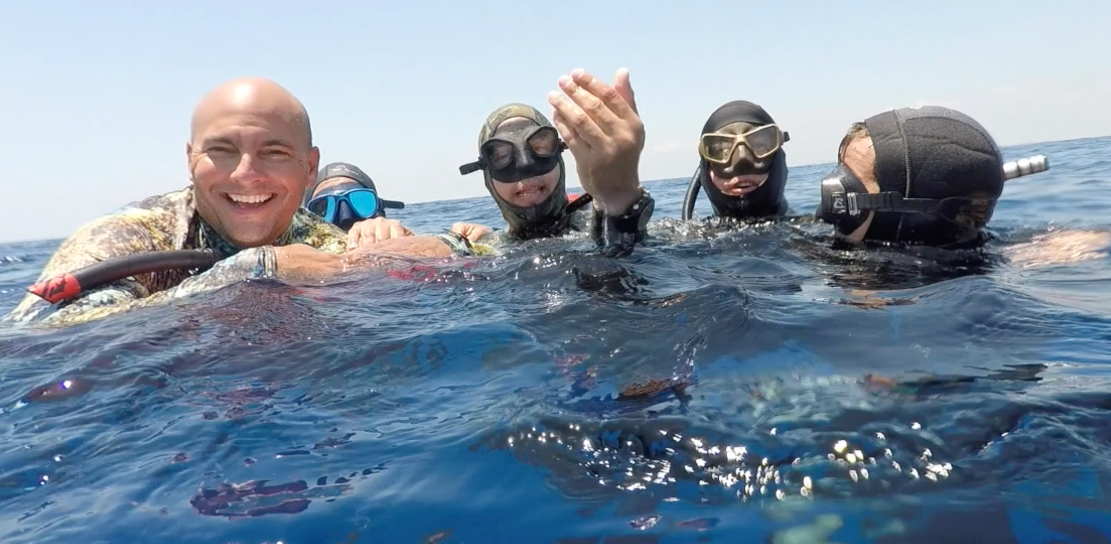
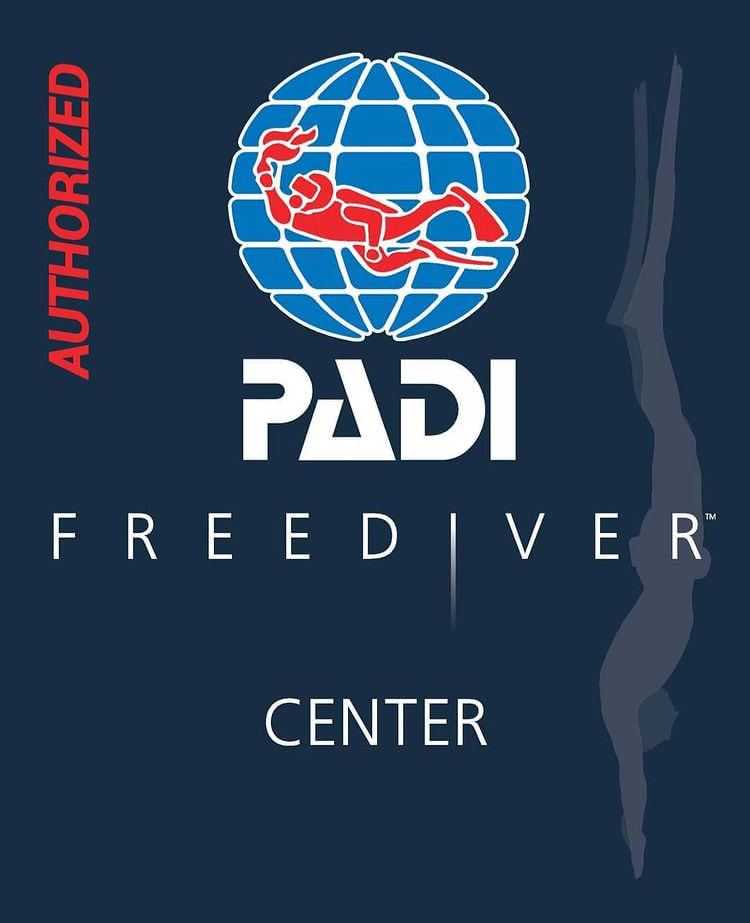
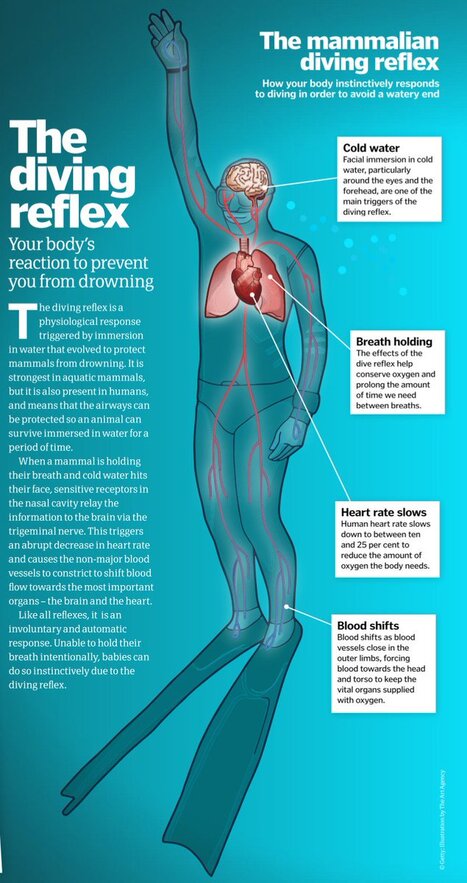
 RSS Feed
RSS Feed
